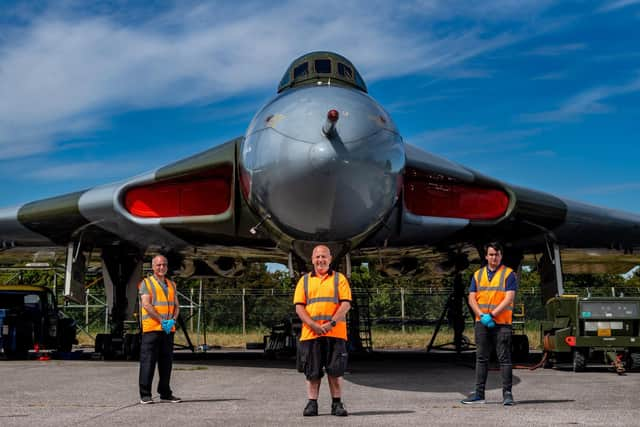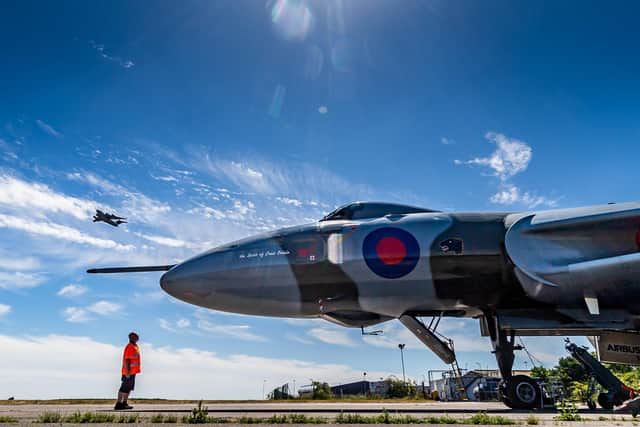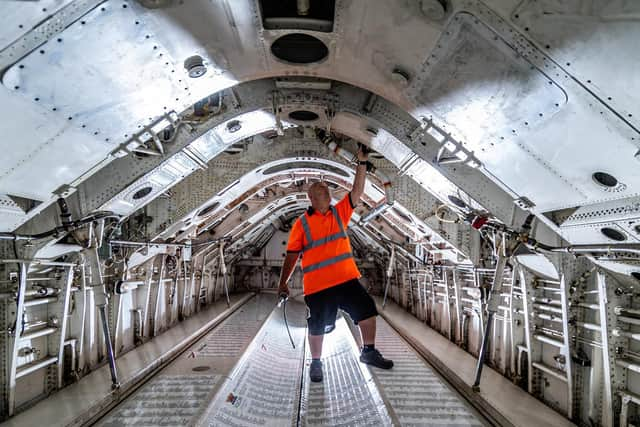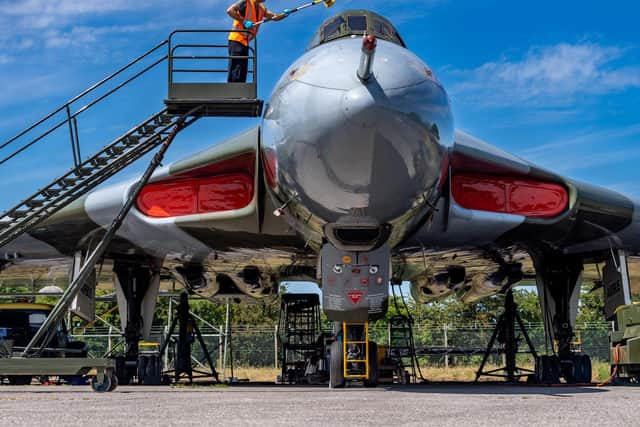How the last Vulcan bomber is keeping its Cold War story alive in Doncaster
When Vulcan bomber XH558 took to the skies for the first time from Woodford Aerodrome, Harold Macmillan was Prime Minister, Yuri Gagarin had yet to become the first man in space and no one had heard of The Beatles.
It was May 25, 1960 and the world was once again ill at ease. The Cuban Missile Crisis was less than a year away and against this tremulous backdrop another symbol of the Cold War passed almost unnoticed.
Advertisement
Hide AdAdvertisement
Hide AdYet this British-designed, jet-powered and delta-winged strategic nuclear bomber was one of the most technically advanced aircraft of its time and would become synonymous with the RAF during the uneasy peace.


Though it hasn’t flown in nearly five years, and is unlikely to do so again, XH558 is now the last surviving airworthy Vulcan bomber and is based at Doncaster Sheffield Airport which has become a memorial to its era.
The aircraft is looked after by the Vulcan to the Sky Trust and to mark its 60th anniversary, the charity launched a campaign inviting people to immortalise themselves under its wings. For a donation of £30, their name, or that of a loved one, could be etched in vinyl and added to a plaque on the underside of the craft.
It has proved hugely popular. There were more than 300 takers in the first six days and Dr Robert Pleming, who leads the trust, says the number now stands at around 30,000 and counting.
Advertisement
Hide AdAdvertisement
Hide AdThe money will contribute to funding for a planned new £4million centre - the Vulcan Experience - at the airport, which would house the aircraft as well as a green technology hub.


“We not only want to tell her story and that of the Cold War, we also want to show what the airline and aerospace industry are doing to tackle the problem of climate change,” says Dr Pleming.
“No one is really telling the story of how the industry is tackling this very significant issue. It is an engineering problem and the solutions lie with engineers and new technologies. We’ve all heard about electric cars, well there are also electric aircraft now and there’s a lot to say about the research that’s going on.”
The hope is that this piece of British aviation history could pique the curiosity of youngsters.
Advertisement
Hide AdAdvertisement
Hide Ad“Our mission is not only to talk about the history of the Vulcan and what it did and what it represented at the time, but also to inspire youngsters to get into engineering and technology,” Dr Pleming added.


The story of the Vulcan is entwined with British post-war history. It was designed - along with the Vickers Valiant and the Handley Page Victor - to carry nuclear weapons and act as a deterrent against the Soviet Union, and it was the Vulcan that proved to be the mainstay of the RAF’s bomber fleet during the Sixties.
Its maiden flight came in 1952. Over 300 of these aircraft were made and they were based at 10 stations dotted along the eastern side of England, with RAF Finningley, now Doncaster Sheffield Airport, one of them.
“The first flight of the Vulcan was only 11 years after the first flight of the Lancaster, which is an incredible pace of development, and these aircraft carried the British contribution to the Nato nuclear deterrent from 1955 until the Polaris submarine fleet took over the role in 1969,” said Dr Pleming.
Advertisement
Hide AdAdvertisement
Hide AdWe know that XH558 was involved in some key moments - it was used to collect atmospheric samples after China detonated its first atomic bomb in the Pacific in 1964, an event that sparked widespread alarm in the West.


By the end of the decade several Vulcans, like the one at Doncaster, were converted into maritime radar reconnaissance aircraft. XH558 was subsequently converted into a tanker aircraft before returning to her original role as a bomber, and then retiring from RAF service in 1993.
However, that wasn’t the end of the story. In 1997, Dr Pleming and a small team started to investigate the possibility of returning it to flight.
Ten years and £7m later, in a triumph of British engineering, the aircraft made its first post-restoration test flight in October 2007. XH558 went on to fly for eight more display seasons, to an estimated 20 million people across the UK.
Advertisement
Hide AdAdvertisement
Hide AdThe Vulcan is certainly an awesome sight both on the ground and in the air.
“She’s a beautiful shape and incredibly strong because the wings are very thick,” says Dr Pleming.
“She’s also very nimble, so she flies like a fighter plane despite her size. She could fly up to 60,000 feet just under the speed of sound, and what many people also remember is the sheer noise powered by these four Olympus turbo jet engines.
“Our aircraft was the first Vulcan B Mk2 model to go into RAF service and she’s not only the last Vulcan to fly, she’s also the oldest complete Vulcan in existence.”
www.vulcantothesky.org